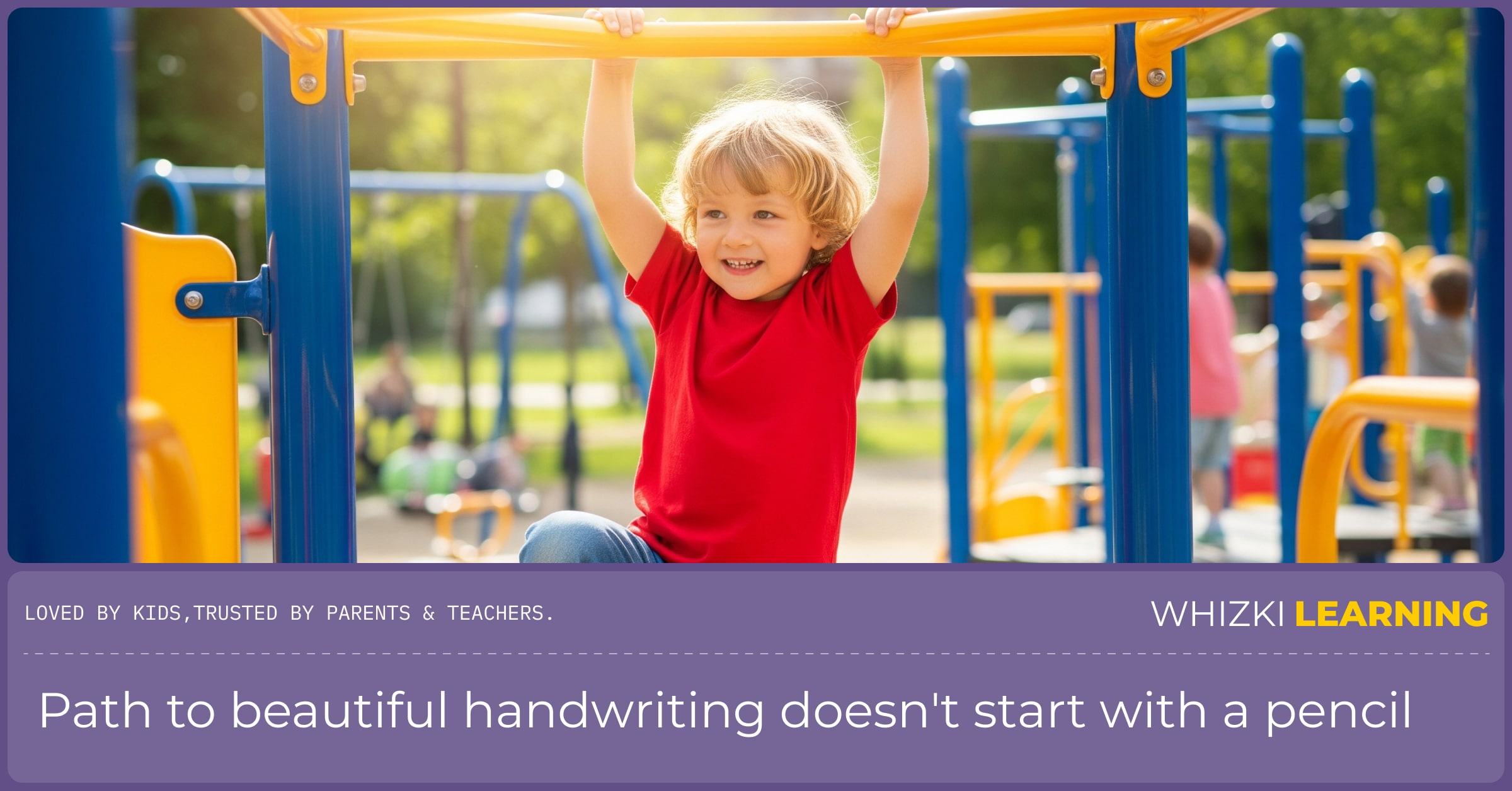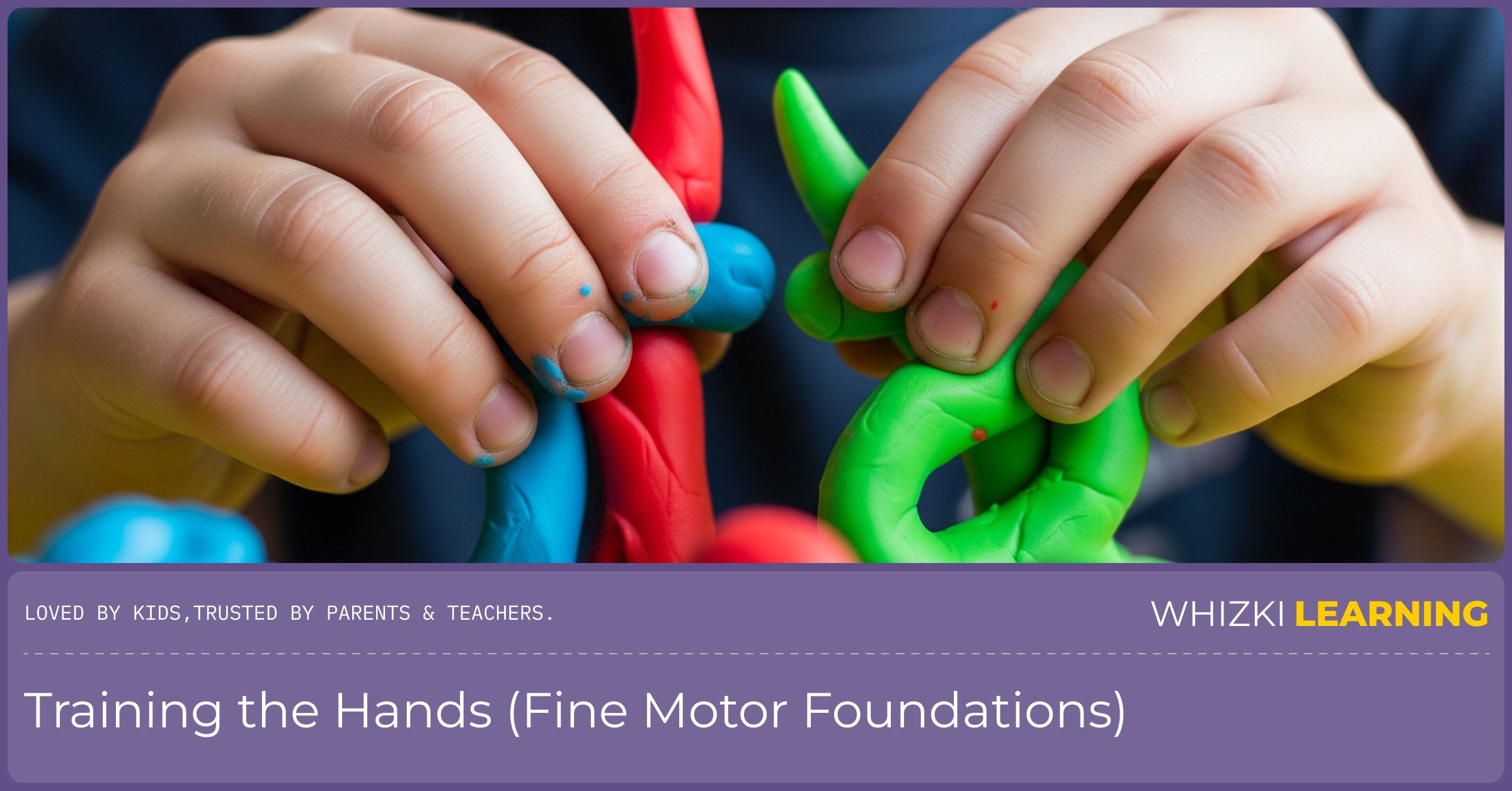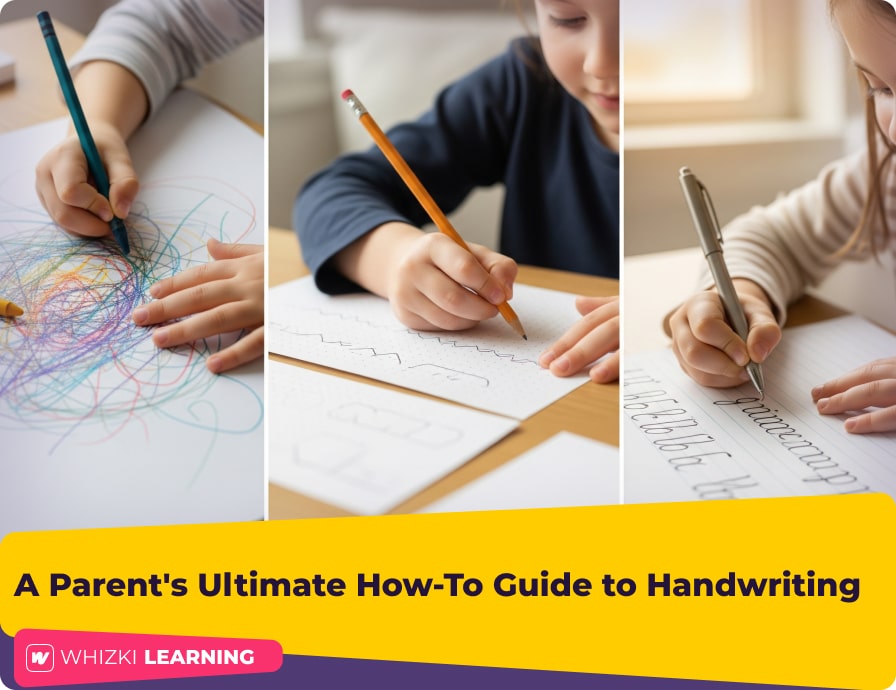Let's sit down together for a moment. You just picked up a piece of paper off the floor. On it is a whirlwind of crayon marks-a chaotic, passionate, indecipherable scribble. A part of you smiles at the creative energy. But another, quieter part of you might feel a tiny twinge of worry. You look at it and think, 'Is this... normal? Shouldn't it look more like... something?' Especially when you see other kids on social media who are the same age and seem to be writing their names perfectly.
If you've ever felt that, please know you are not alone. Welcome to one of the most common, unspoken anxieties of early parenthood. The good news? That beautiful, chaotic scribble isn't just 'normal'-it's the first, crucial, wonderful chapter in the long story of your child's handwriting development. It's the seed from which everything else grows.
This isn't going to be a quick list of tips. This is a deep, gentle, step-by-step guide. We're going to honor that scribble. We're going to unpack the entire journey, from building a strong body to training nimble fingers, all the way to forming letters with ease and confidence. This is your pressure-free roadmap to raising a happy writer.
Chapter 1: The Surprising Secret to Good Handwriting? Big Body Play!
This might sound crazy, but the path to beautiful handwriting doesn't start with a pencil. It starts on the playground. Before a child can control the small muscles in their hands (fine motor skills), they need to control the large muscles of their torso, shoulders, and arms (gross motor skills). Think of a child's body like a tree: you need a strong, stable trunk before the branches and leaves can be steady.

Why Core Strength Matters
Imagine trying to write while sitting on a wobbly stool. You'd be so focused on not falling over that you couldn't possibly write neatly. For a child with a weak core, every seated activity feels like sitting on a wobbly stool. They fidget, they slump, they lie their head on the table-not because they're being 'bad,' but because their body is tired. A strong core provides the stability needed to sit upright and free up the arms and hands for the delicate work of writing.
How-To: Build a Strong Foundation Through Play
Your job isn't to be a personal trainer; it's to be a playmate. Here's how to build these crucial muscles in a way that just feels like fun:
- Playground Power: The playground is a free, full-body gym for kids. Swinging builds core and arm strength. Climbing ladders and slides engages the whole body. Hanging from the monkey bars is one of the single best activities for developing shoulder stability, which is critical for supporting the arm during writing.
- Animal Walks: A classic for a reason! Challenge your child to a 'race' across the living room. Try the 'Bear Walk' (hands and feet on the floor, bottom in the air) or the 'Crab Walk' (sitting, with hands and feet on the floor, lifting the hips). This is a joyful way to build incredible upper body and core strength.
- 'Heavy Work' Activities: Kids love feeling helpful and strong. 'Heavy work' involves pushing or pulling, which helps organize the nervous system and build muscle. Simple tasks like helping you carry a small bag of groceries, pushing a child-sized wheelbarrow full of leaves, or pulling a wagon with their stuffed animals are all fantastic forms of heavy work.
- Outdoor Fun: Riding a tricycle or scooter, digging in a sandbox, or swimming are all brilliant for developing overall coordination and strength.
The Link to Writing: Every time your child hangs, pushes, or climbs, they are building the strong 'trunk' that will one day allow them to control the tiny 'leaves' of their fingertips with precision and endurance.
Chapter 2: Training the Hands (Fine Motor Foundations)
Once the big muscles are getting their workout, we can zoom in on the hands. Strong, nimble hands are built through hundreds of hours of playful manipulation. We're aiming to develop a few key skills: hand strength (for endurance), pincer grasp (using the thumb and index finger), and in-hand manipulation (moving small objects around in the palm).
A Toolbox of Playful Hand-Strengthening Activities
Here are some 'how-to' ideas to build these skills. Remember, variety is key!
1. The Power of Play-Doh: Play-Doh (or clay) is a powerhouse. Squishing, rolling, pinching, and squeezing are all incredible hand workouts. Try hiding beads inside a ball of dough and having your child 'rescue' them. This forces them to use those pincer fingers!

2. Kitchen Helpers: The kitchen is a goldmine for fine motor practice. Tearing lettuce for a salad, stirring thick batter, using tongs to move pasta, and squirting a bottle of water to 'clean' the counter are all amazing for building hand muscles.
3. Peeling and Sticking: Peeling stickers is a surprisingly effective pincer grasp workout. Give them a sheet of stickers and a piece of paper and let them go to town. Or, for a bigger challenge, try peeling the tape off a banana.
4. Threading and Lacing: Start with large, chunky beads or pieces of rigatoni pasta and a thick shoelace. As they get more skilled, you can move to smaller beads. This develops hand-eye coordination and that all-important pincer grasp.
The Workbook Connection: All of this play prepares the hand for the stamina needed for writing. When a child later picks up a crayon to work in a fine motor skills workbook, their hand won't tire out after 30 seconds. They'll have the strength to see the activity through, which builds confidence.
Chapter 3: The Pre-Writing Strokes (The ABCs of a Line)
Before letters, there are lines. All 26 letters of the alphabet are just combinations of a few simple strokes. Developmentally, children master these strokes in a predictable order. Forcing a child to write an 'X' before they can draw a cross '+' is like asking them to run before they can walk. It leads to frustration.
The Developmental Sequence of Strokes & How to Practice
Here are the foundational strokes and fun, multi-sensory ways to practice them, long before you use paper and pencil.
1. Vertical Line (|) & Horizontal Line (-): These are the first to emerge. Practice by 'skywriting' them with big arm movements. Draw them with a wet paintbrush on the sidewalk. Drag a stick through the sand at the beach.
2. Circle (O): Practice by drawing circles in a tray of salt or shaving cream. Use a spray bottle to make big circles on a wall or window.
3. Cross (+): Once they have mastered vertical and horizontal lines, you can combine them. Build crosses with LEGOs or popsicle sticks.
4. Square (☐), Diagonals (\ /), and 'X': These come later as they require more motor control.
The Workbook Connection: A high-quality First Learn to Trace and Write workbook is the perfect final step for this stage. After a child has 'felt' these strokes with their whole body and in sensory trays, the guided paths on the page make sense. The workbook provides the structure to translate that big-body knowledge into a controlled, paper-based activity.
Chapter 4: Finally, the Letters! (A Playful, Brain-Friendly Approach)
The moment has arrived! But we don't teach letters from A to Z. That's the alphabet's order, not the brain's learning order. We teach them in groups based on their starting strokes. This is more efficient and leads to far less confusion (goodbye, b/d reversals!).
How to Teach Letters in Developmental Groups
Group 1: The 'Magic C' Letters (c, a, d, g, o, q, s):
These letters all start with the same 'c' curve. Start by teaching your child how to make a 'Magic C.' Once they can, show them how a 'Magic C' can magically turn into other letters. 'Magic C... up and down... makes an a!' 'Magic C... way up high, down to the ground... makes a d!' This story-based approach is fun and memorable.
Group 2: The 'Down and Up' Letters (l, t, i, j, k, b, h, m, n, p, r):
These letters all start with a straight line down. Practice these 'big line' letters together.
Group 3: The 'Slider' Letters (v, w, x, y, z):
These are the diagonal letters, which are often the trickiest. They should come last.
Focus on Lowercase First: It might seem counterintuitive, but it's crucial. 95% of what we read is in lowercase. Lowercase letters are also more distinct from one another and generally easier to form than their blocky uppercase counterparts.
The Workbook as a Guide: This is where a handwriting mastery practice workbook shines. A good one will introduce letters in these developmental groups. It will provide a starting dot and clear directional arrows, taking the guesswork out of letter formation and allowing your child to work independently and build confidence.
Chapter 5: Troubleshooting & Gentle Encouragement
The path isn't always smooth. Here's some parent-to-parent advice for common bumps in the road.
- 'My child hates writing!' Then stop 'writing.' Go back to Chapter 1 and 2. Play with Play-Doh, hang on the monkey bars, draw in shaving cream. Their body might be telling you it's not ready for pencil and paper, and that's okay. The goal is to build skills joyfully. Pressure is the enemy of learning.
- 'What about letter reversals?' Reversing 'b' and 'd' or 'p' and 'q' is 100% developmentally normal for children up to age 7 or 8. Their brains are still learning that orientation matters (a chair is a chair no matter which way it faces). The best cure is time and multi-sensory practice, not constant correction.
- 'Their pencil grip looks weird.' The 'tripod' grip is the goal, but many functional grips exist. If their grip isn't causing them pain and they can write without tiring quickly, it might be fine. To encourage a better grip, try breaking crayons into tiny, one-inch pieces. It's almost impossible to hold a tiny crayon with a fisted grasp!
Your Gentle Guide on this Journey: Whizki Learning
Through every chapter of this guide, from big body play to letter formation, the goal is confident, happy learning. Our entire line of `educational print resources` is built on this play-based, pressure-free philosophy. Think of our workbooks as a helpful tool in your toolbox-a structured, screen-free, and fun way to practice the skills you're building through all this wonderful play. They provide the perfect 'just right' challenge when your child is ready for focused, paper-based 'work.'
The Continuing Journey...
Handwriting is not a subject to be checked off a list by age 5. It is a complex developmental skill that unfolds over many years. Your role isn't to be a drill sergeant, but a patient, loving guide. By focusing on building a strong foundation through play and celebrating the process over perfection, you are giving your child the greatest gift: the confidence to make their mark on the world, one beautiful letter at a time.






